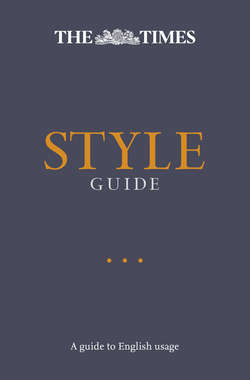Читать книгу The Times Style Guide: A guide to English usage - Ian Brunskill - Страница 5
ОглавлениеThis updated version of The Times Style Guide aims to provide writers and sub-editors with a quick reference to contentious points of grammar and spelling, and to guide them through areas where confusions have arisen in the past. It is a guide, not a straitjacket. Consistency is a virtue, but it should not be pursued at the expense of clarity, elegance or common sense.
By the standards of its predecessors this is a permissive volume. It avoids unnecessary prescription and prohibition. It tries to distinguish linguistic superstitions from grammatical rules. It hesitates to condemn common usage that neither baffles nor offends. English is not a language fixed for all time. Speech changes and its written form should change too. The Times must use the language of its readers, but that language at its best, clearest and most concise.
The guide sets out the paper’s detailed preferences in such fields as capitalisation, hyphenation and variant spelling. More general entries are intended to encourage reflection about words and the way we use them. While all Times journalists should follow house style, they should not do so unthinkingly. Considered exceptions can (and often must) be made, especially in direct quotes, in features, diaries and other less formal kinds of writing, and with columnists whose individual voices should be heard and whose flow of argument should be preserved.
Where extra guidance is needed, and for all spellings, hyphenations etc not covered by the guide, staff are expected to use as their first point of reference Collins English Dictionary. Other helpful resources are the New Oxford Dictionary for Writers and Editors (Odwe), the Concise Oxford or Chambers. For place names The Times Comprehensive Atlas of the World should be consulted.
Further advice on style and on good writing may be found in the familiar authorities: Fowler (Modern English Usage), Partridge (Usage and Abusage), Gowers (The Complete Plain Words) and their admirably brisk US counterpart Strunk & White (The Elements of Style). The compendious Chicago Manual of Style contains sensible (American) guidance on almost everything. Kingsley Amis’s The King’s English takes a more idiosyncratic approach. All are valuable works of informed and considered opinion; none should be regarded as a repository of unbreakable rules.
There are thoughtful books on the particular challenges of journalistic writing by Harold Evans (Essential English for Journalists, Editors and Writers) and Keith Waterhouse (On Newspaper Style).
